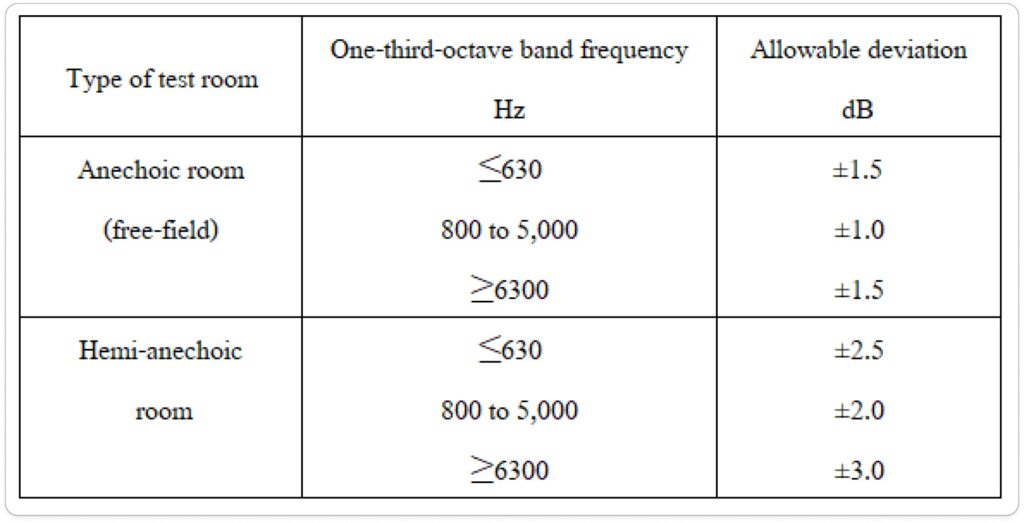An anechoic room can be considered analogous to a precision acoustical measurement instrument providing a free-field environment without noise interence. An acoustical free-field exists in a homogeneous, isotropic medium in which reflecting boundaries, or their effects, are absent. In an ideal free-field environment, the inverse square law would function perfectly. This means that the sound level from a spherically radiating sound source decreases six decibels (6 dB) for each doubling of distance from the source.
A room designed and constructed to provide such an environment is called an anechoic room. An anechoic room also provides a quiet environment free from excessive variations in temperature, pressure, and humidity. Outdoors, local variations in these conditions, as well as wind, can significantly and unpredictably
disturb the uniform radiation of sound waves. This means a true acoustical free field is only likely to be found inside an
anochoic room.
The aerospace, aviation, ground transportation, communications, electronic, business machinery, computer, automotive, and trucking industries utilize anechoic c rooms for the development of quieter products. Medical research facilties, including colleges and universties, are also primary users for such acoustical environments.
Design anechoic Room
INVERSE SQUARE LAW DEVIATIONS
According to ISO Standard 3745 ”an anechoic room provides the preferred environment for measurements with the smallest uncertainty” Permissible deviations from the theoretical inverse square law are shown below Cut off Frequency 100, 125, 250 Hz Background Noise ≤ 20 dBA

Sound absorption coefficients are a function of frequency and are critically dependent on type of material, its thickness, and configuration. on. The low -frequency sound absorption of a material such as an anechoic wedge for sound at normal incidence can be measured in a device called an impedance tube. The lowest frequency at which a material has a normal incidence sound absorption coet-ficient of 0.99 is called its cut-off frequency.
However, the controlling parameter for a well functioning anechoic room is its inverse s square law portormance. One practical well-proven method to achieve a free-feid is to shape sound-absorbing material into wedge configurations for mounting onto the interior surfaces. The cut off frequency

